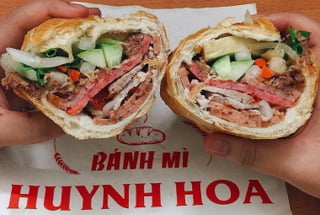VND50,000 for Banh Mi? Some say excessive but Huynh Hoa is a deserving point of pilgrimage for lovers of Vietnamese-style subs. If you’re not a big eater; ask for your banh mi to be cut into two because it’s filled to the brim with homemade pate, 5 types of ham, and addictive pickles.







